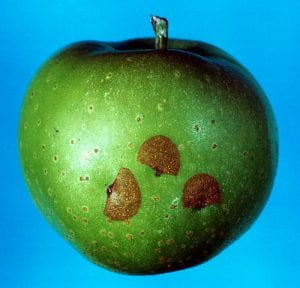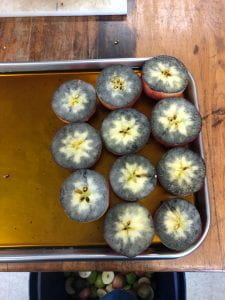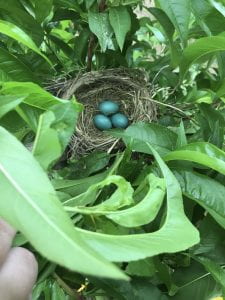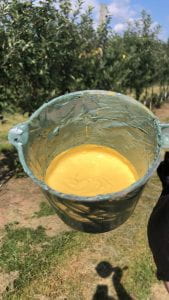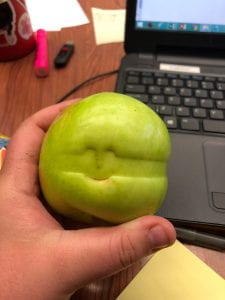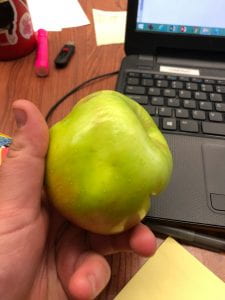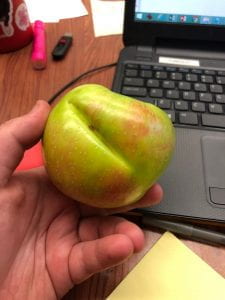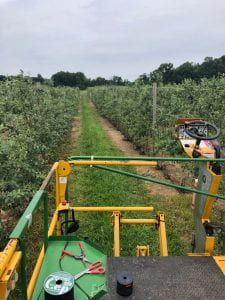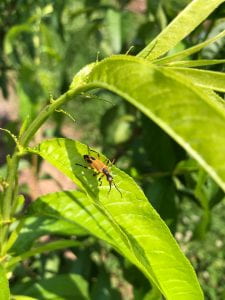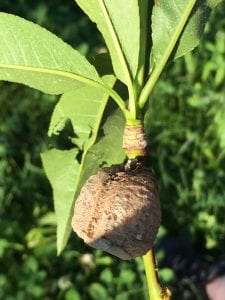Hey y’all, welcome back to the (last) blog. Today I wanted to wrap up my experience at FREC and summarize what I learned.
During my time at FREC, I learned the most about general orchard maintenance, such as different pruning methods, tree training methods, how many fruit you should thin down to, and I also learned how to recognize different plant diseases and insect damages. My favorites to find and look at are Plum Curculio damage in apples and Stink Bug gummosis in peaches. I will post pictures below.
In addition, one of my favorite things to do was to test the ripeness of apples with starch iodine. Unfortunately I only got to do this a couple of times because it’s not apple season, but I still had fun the two times that I did do it. The testing was for a color experiment in Gala. I will put pictures of it below. The pictures below are the same treatment, but about a few days apart.
Unfortunately, I was only able to harvest apples once, on my last day. I wish that I had been able to stay there all through apple harvest because that seems so fascinating to me. This is mainly because I would then be able to help with the experiment that Dr. Schupp gave Megan and me. Further, I wished that I was able to work in all of the departments at FREC (entomology, plant pathology, and precision agriculture) because I take interest in all of those areas as well.
I had so much fun at FREC this summer. Most days, it seemed like just hard work, but overall it was very rewarding. I got to do so many cool things like identifying bugs, picking fruit, pressure testing apples and pears, and many other things. Further, I had a fun time writing this blog, it really helped me reflect on my experience at FREC. It helped solidify the knowledge that I gained working there.

